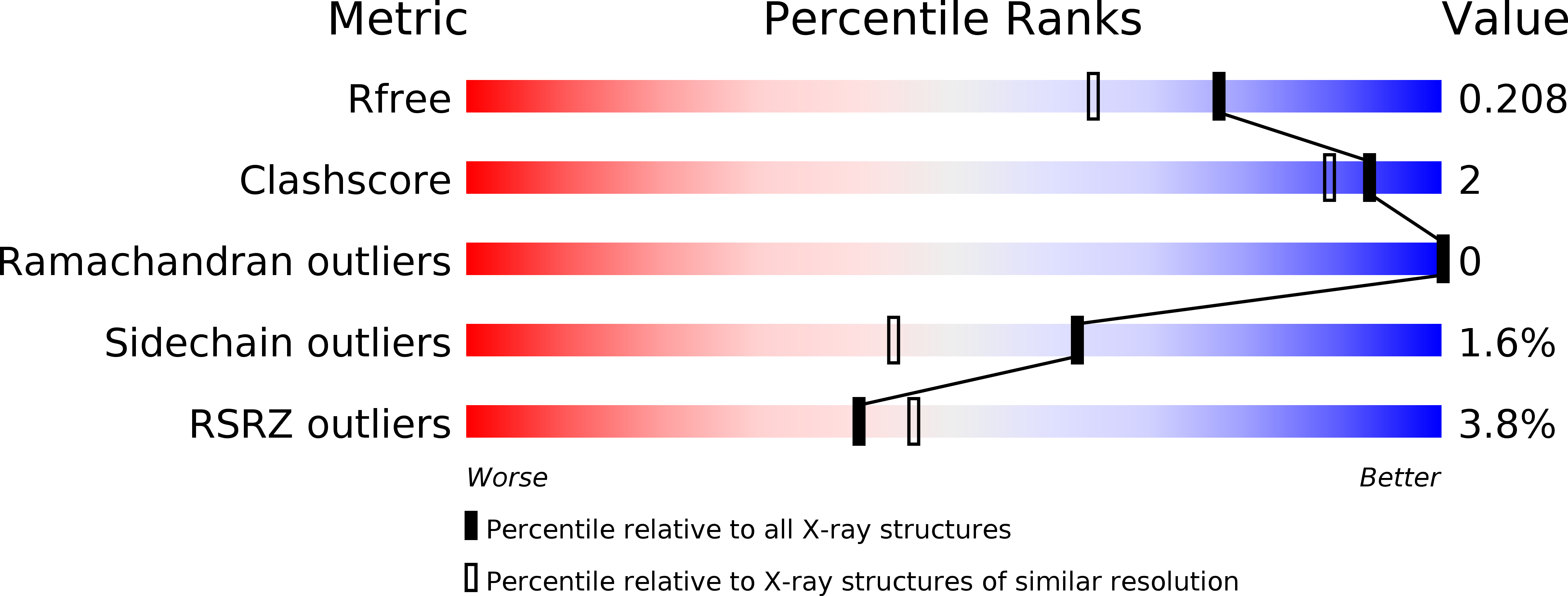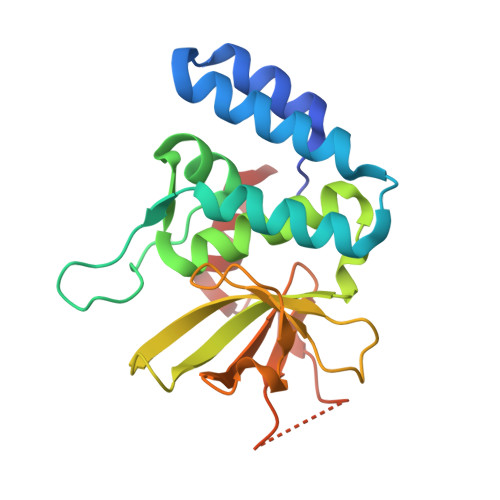Structural characterization of a conserved, calcium-dependent periplasmic protease from Legionella pneumophila.
Chatterjee, D., Boyd, C.D., O'Toole, G.A., Sondermann, H.(2012) J Bacteriol 194: 4415-4425
- PubMed: 22707706
- DOI: https://doi.org/10.1128/JB.00640-12
- Primary Citation of Related Structures:
4FGO, 4FGP, 4FGQ - PubMed Abstract:
The bacterial dinucleotide second messenger c-di-GMP has emerged as a central molecule in regulating bacterial behavior, including motility and biofilm formation. Proteins for the synthesis and degradation of c-di-GMP and effectors for its signal transmission are widely used in the bacterial domain. Previous work established the GGDEF-EAL domain-containing receptor LapD as a central switch in Pseudomonas fluorescens cell adhesion. LapD senses c-di-GMP inside the cytosol and relays this signal to the outside by the differential recruitment of the periplasmic protease LapG. Here we identify the core components of an orthologous system in Legionella pneumophila. Despite only moderate sequence conservation at the protein level, key features concerning the regulation of LapG are retained. The output domain of the LapD-like receptor from L. pneumophila, CdgS9, binds the LapG ortholog involving a strictly conserved surface tryptophan residue. While the endogenous substrate for L. pneumophila LapG is unknown, the enzyme processed the corresponding P. fluorescens substrate, indicating a common catalytic mechanism and substrate recognition. Crystal structures of L. pneumophila LapG provide the first atomic models of bacterial proteases of the DUF920 family and reveal a conserved calcium-binding site important for LapG function.
Organizational Affiliation:
Department of Molecular Medicine, College of Veterinary Medicine, Cornell University, Ithaca, New York, USA.














